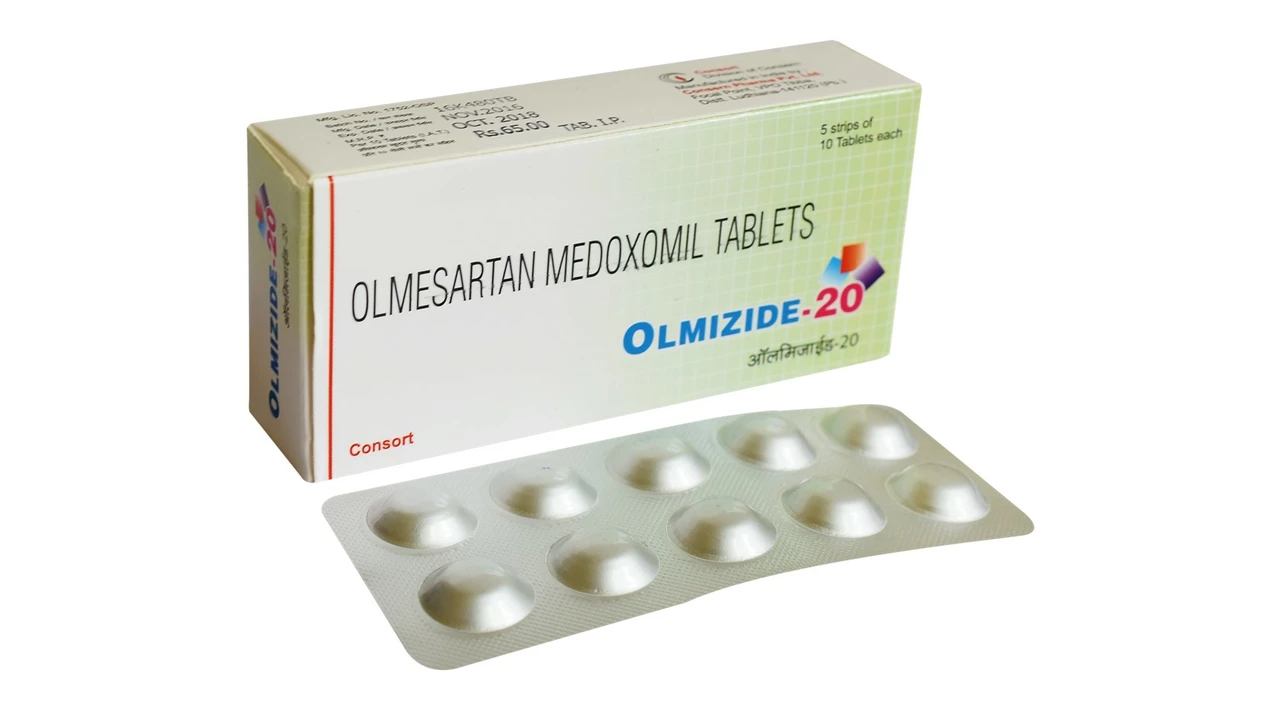Olmesartan is a prescription medicine doctors use to lower high blood pressure. It belongs to a group called ARBs — angiotensin receptor blockers — which relax blood vessels so your heart can pump easier. If your doctor prescribed olmesartan, you probably want quick, practical facts. Here they are.
How it works: Olmesartan blocks a hormone that tightens blood vessels. That reduces pressure inside your arteries and lowers strain on your heart. Lowering blood pressure cuts your risk of stroke, heart attack, and kidney damage over time.
Common doses: Olmesartan usually comes in 5 mg, 20 mg, and 40 mg tablets. Doctors often start at 20 mg once daily for adults and adjust based on blood pressure and other meds. Take it the same time each day. You can take it with or without food.
Side effects to watch for: Most people tolerate olmesartan well. The usual side effects are dizziness, tiredness, and stomach pain. If you feel lightheaded, stand slowly. Serious problems are rare but worth noting: severe allergic reaction, kidney problems, or very low blood pressure. Contact your doctor if you have swelling in the face, trouble breathing, sudden change in urination, or fainting.
Don't take olmesartan if you are pregnant or trying to become pregnant. ARBs can harm a fetus. Avoid it if you have severe liver disease or a known allergy to this drug. If you have kidney artery narrowing or take potassium supplements, discuss risks with your doctor because olmesartan can increase potassium levels.
Tell your prescriber about all medicines you take. Combining olmesartan with ACE inhibitors, potassium-sparing diuretics, or potassium supplements raises the chance of high potassium or low blood pressure. Nonsteroidal anti-inflammatory drugs (NSAIDs) like ibuprofen can reduce olmesartan's effect and affect kidney function, especially in older adults.
If you miss a dose, take it when you remember unless it's close to the next dose. Don't double up. Regular blood pressure checks help your doctor adjust the dose. Home BP readings give a clearer picture than occasional clinic checks.
Saving money: Generic olmesartan is widely available and cheaper than brand names. Compare prices at trustworthy online pharmacies, local chains, and discount programs. If cost is an issue, ask your doctor about lower doses, alternative ARBs, or pharmacy discount cards.
Final practical note: Olmesartan helps when used consistently. It often won't cause immediate symptoms, so don't stop it because you feel fine. If side effects or costs are a problem, talk to your clinician — there are safe alternatives and ways to cut expenses.
Your doctor will likely test kidney function and potassium within a couple weeks after starting or adjusting olmesartan. Bring lab results to follow-ups so dose changes are based on numbers, not guesswork.
Store tablets at room temperature away from moisture. If you travel, pack pills in bottle and keep a list of meds and your doctor's contact in case you need care abroad.

As a blogger, I've recently come across some fascinating research on the impact of Olmesartan/Amlodipine on the quality of life for hypertensive patients. This combination of medications has shown significant improvements in blood pressure control and overall well-being. Many patients experienced fewer side effects compared to other treatments, resulting in better adherence to their medication regimen. Ultimately, this has led to a reduced risk of cardiovascular events and other complications associated with hypertension. It's truly remarkable to see how effective these medications can be in improving the lives of those suffering from high blood pressure.
CONTINUE READING